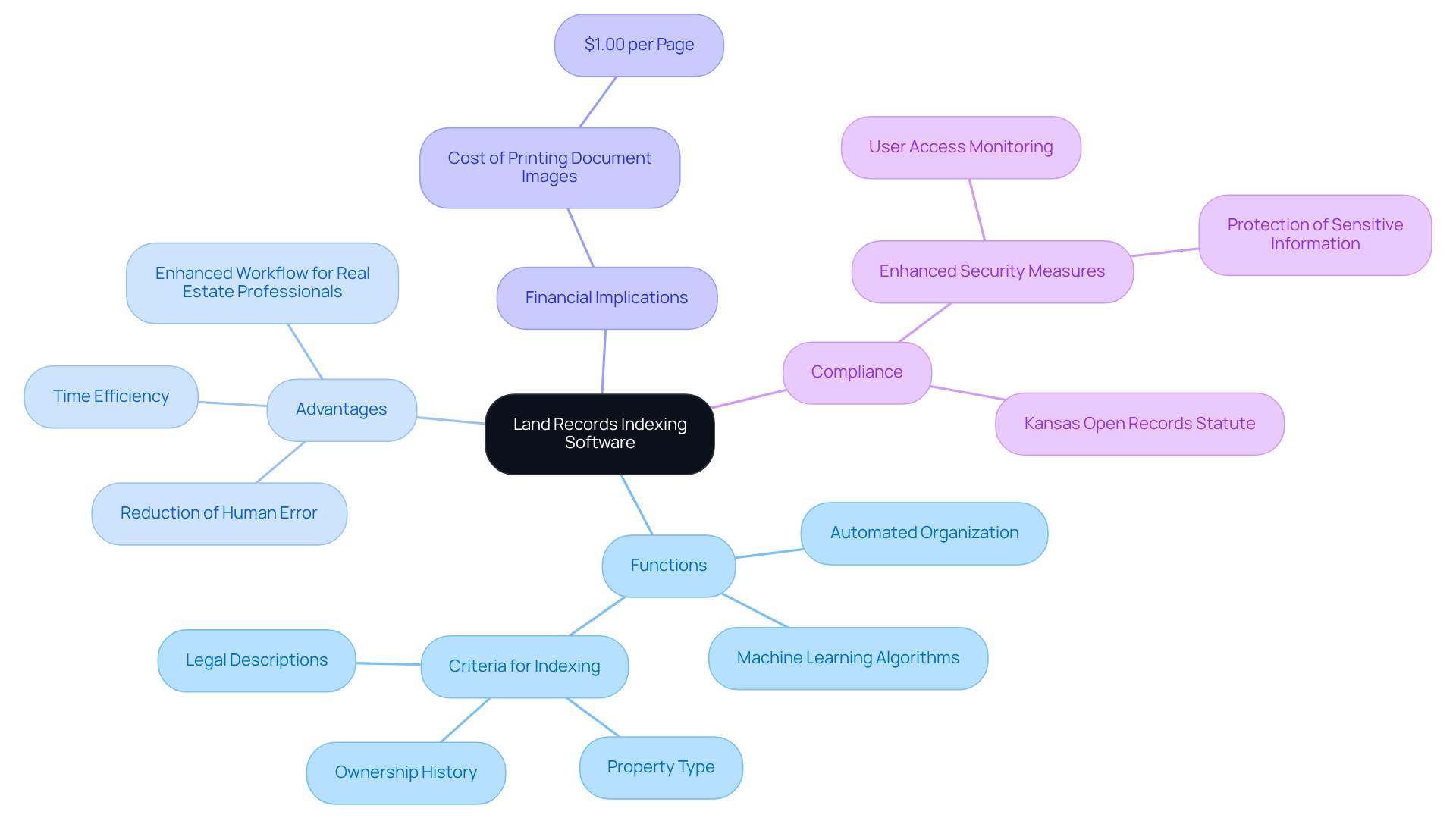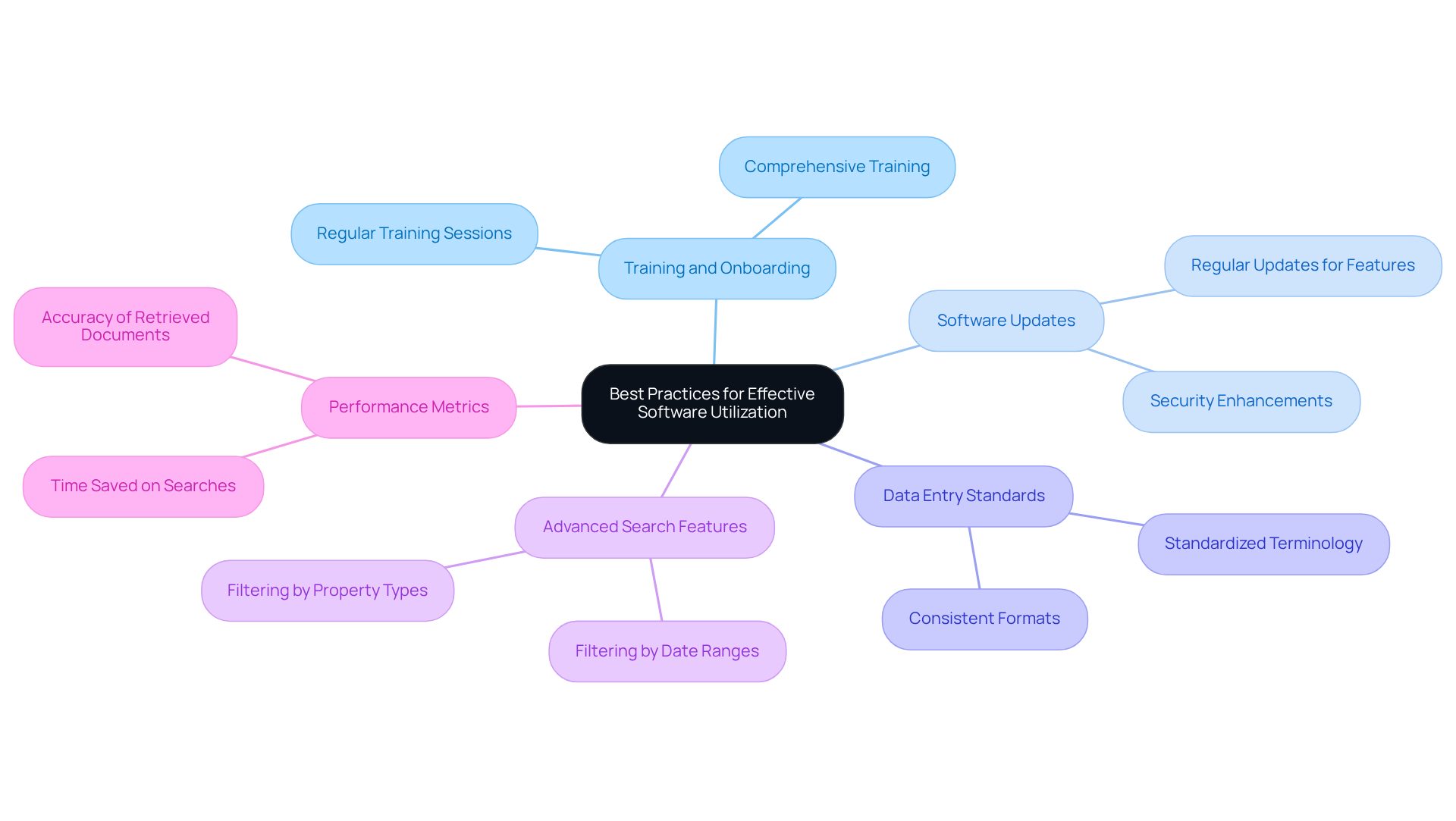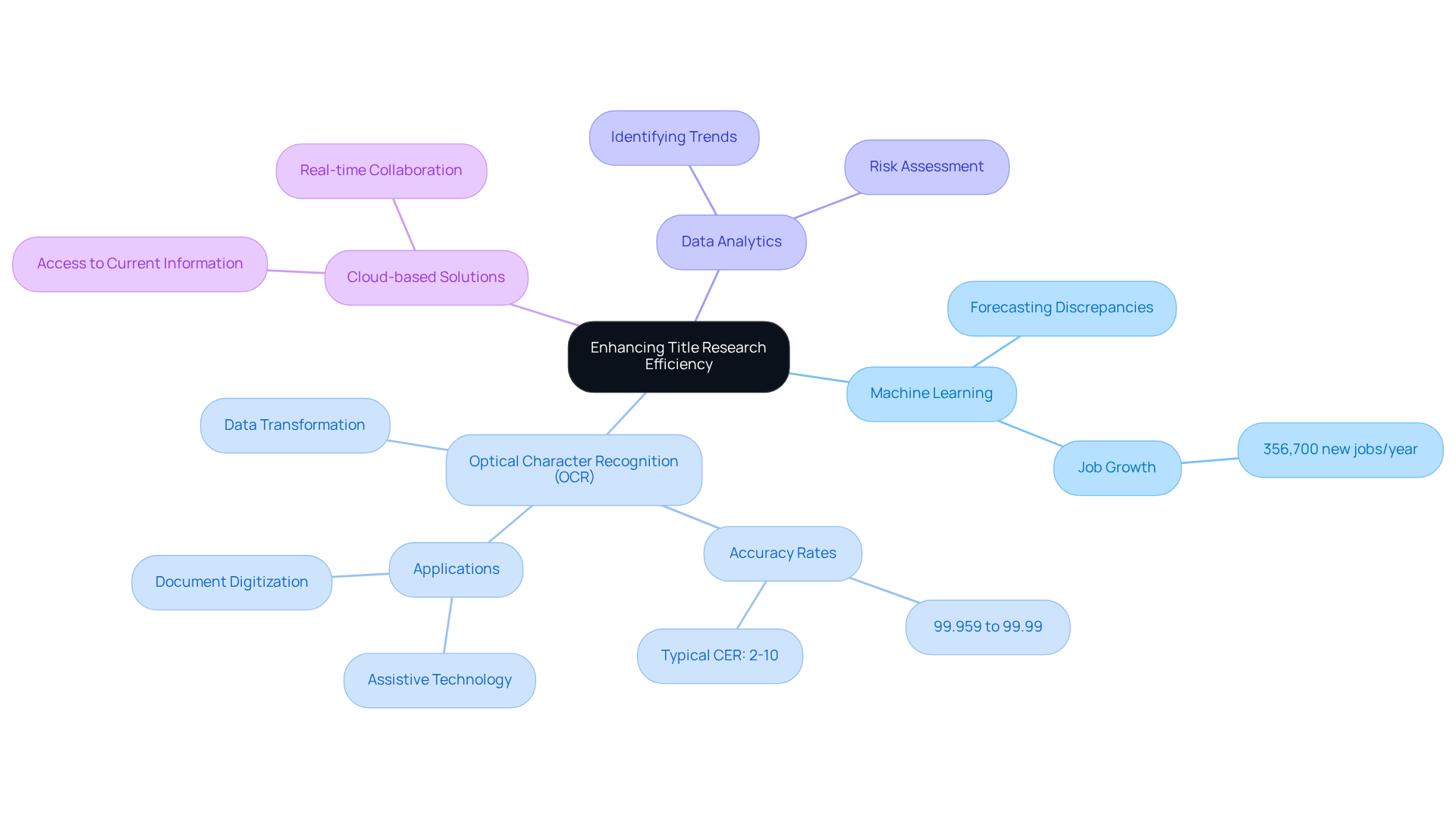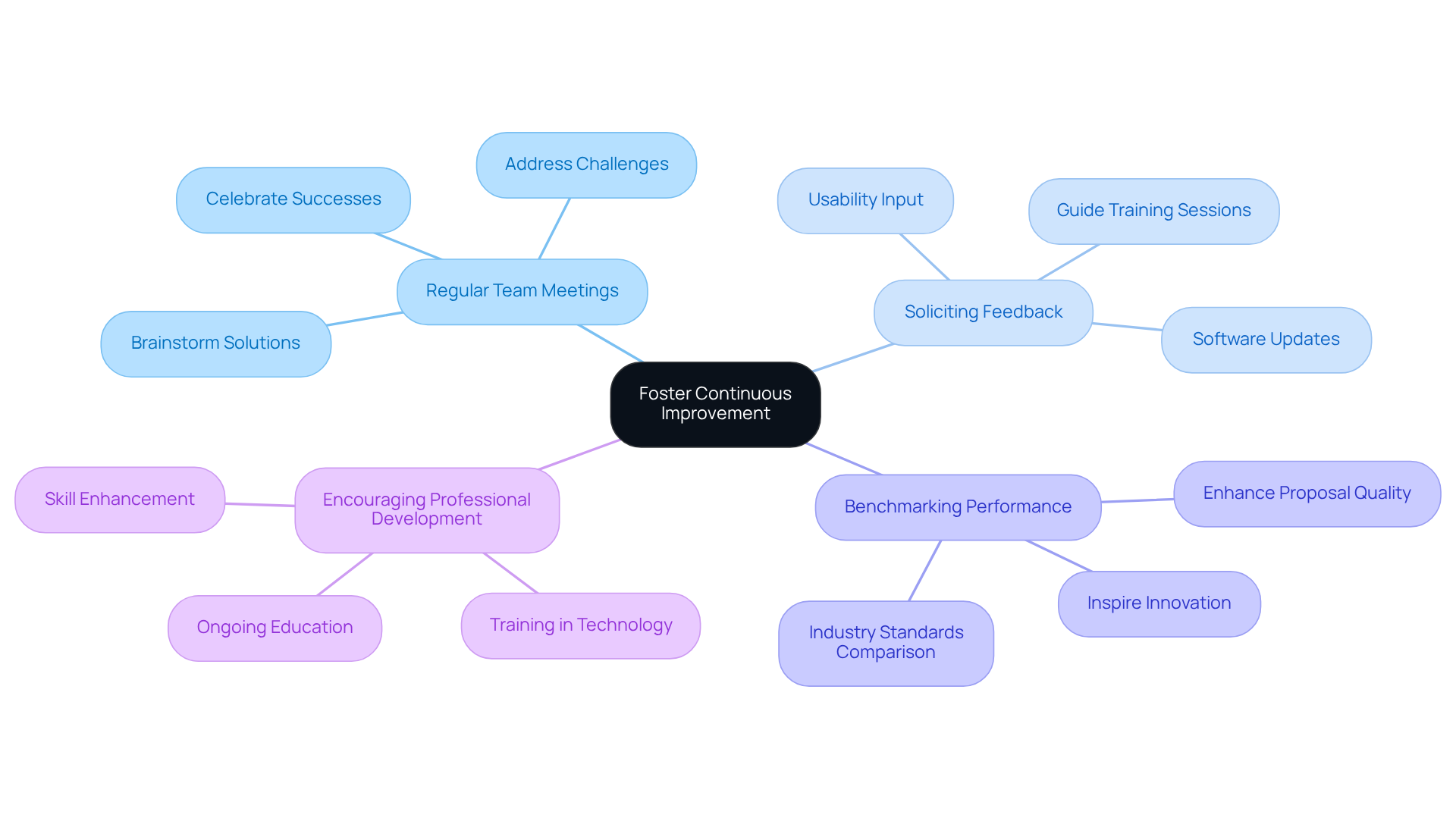Overview
Land records indexing software significantly enhances title research efficiency by automating the organization and retrieval of ownership records. This advancement greatly reduces the time and potential errors associated with manual searches. Furthermore, the software employs machine learning for effective categorization, integrates seamlessly with existing databases for timely updates, and outlines best practices for optimal utilization. Consequently, these features not only improve workflow but also ensure compliance in property documentation.
Introduction
Land records indexing software has fundamentally transformed the realm of title research, redefining how property ownership information is organized and accessed. By automating the retrieval and categorization of essential documents, this technology not only accelerates the research process but also significantly enhances accuracy and reliability. This allows professionals to concentrate on delivering exceptional service.
However, as the real estate industry continues to evolve, a pressing challenge remains: how can organizations fully harness these advancements to optimize their workflows and ensure compliance? Exploring best practices and innovative technologies is crucial to uncovering the solutions needed to maximize efficiency in title research.
Understand the Role of Land Records Indexing Software in Title Research
plays a vital role in contemporary by automating the organization and retrieval of . This technology allows researchers to swiftly access , significantly reducing the time spent sifting through physical records or unindexed digital files. By leveraging machine learning algorithms, the application categorizes and indexes documents based on various criteria, including:
- Property type
- Ownership history
- Legal descriptions
This advancement not only accelerates the research process but also mitigates the risk of human error, enabling to deliver . Furthermore, the application’s ability to and systems facilitates seamless updates and maintenance of information, making it an indispensable resource for real estate professionals aiming to .
Additionally, considering the cost of printing document images at $1.00 per page, the land records indexing software become evident. The implementation of enhanced security protocols within the Land Document Search system underscores the importance of compliance with the , ensuring users can access deed documents from 1930 to present, alongside other materials from 1969 to present, while safeguarding sensitive information.
For those requiring in-person access, documents are retrievable at the Ruffin Building, located at Douglas and Broadway, from Monday to Friday, 8 a.m. to 5 p.m., without the need for a reservation.

Implement Best Practices for Effective Software Utilization
To maximize the effectiveness of , title researchers must adopt several best practices:
- Training and Onboarding: It is essential that all team members receive and functionalities. This empowers them to utilize the tool effectively and reduces the learning curve. Regular training is crucial, as highlighted in the case study "," which emphasizes the importance of training for a diverse workforce to .
- Organizations should keep their land records indexing software updated to benefit from the latest features and security enhancements. With a for land documentation management, investing in regular updates that enhance performance and compatibility with other systems is vital. This is particularly significant given the 30% increase in violations in land management systems, underscoring the necessity for robust data handling practices.
- Data Entry Standards: Establishing clear data entry standards is imperative to maintain consistency across records. This includes using standardized terminology and formats, facilitating easier searching and indexing.
- Utilize Advanced Search Features: Researchers should be encouraged to leverage the program's , such as filtering by date ranges or property types, to swiftly find pertinent materials.
- Monitor Performance Metrics: through metrics such as time saved on searches and accuracy of retrieved documents is essential. This practice helps identify areas for improvement and ensures that the software meets the team's needs.
By adopting these best practices, organizations can significantly enhance the efficiency and accuracy of their title research processes, ultimately leading to improved service delivery and compliance in land records management using land records indexing software. As Karla Gilbride, General Counsel of the EEOC, stated, "Effective supervision of documents is not merely a regulatory obligation; it is a cornerstone of operational integrity and efficiency." Addressing common pitfalls, such as inadequate training or failure to update software, can further enhance the effectiveness of these recommendations.

Leverage Advanced Technologies to Enhance Title Research Efficiency
Integrating can significantly enhance efficiency. Several strategies can be employed to leverage these innovations:
- Machine Learning: By utilizing , one can forecast possible discrepancies or issues in property ownership. This proactive approach not only saves time but also conserves resources by addressing problems before they escalate. With the U.S. Bureau of Labor Statistics projecting approximately 356,700 new jobs per year in computer and information technology occupations from 2023 to 2033, the in this area is on the rise.
- : Implementing OCR technology allows for the transformation of scanned files into editable and searchable formats. This capability enables researchers to quickly obtain pertinent information from physical materials, thereby simplifying the research process. of 99.959% to 99.99%, significantly reducing the likelihood of errors that can hinder efficiency. Additionally, the typical character error rate (CER) for English language OCR on clean scans ranges from 2-10%, providing further context on OCR performance.
- Data Analytics: Utilizing in property ownership and title claims. These insights inform decision-making and risk assessment in real estate transactions, thereby enhancing overall operational effectiveness. For instance, businesses investing in document digitization with OCR often experience increased efficiency and improved messaging quality. Incorporating OCR into business workflows can save time and money by reducing the need for manual review and editing of converted files.
- Cloud-based solutions, such as , facilitate real-time collaboration among team members. This ensures that all stakeholders have access to the most current information, regardless of their location, thus enhancing communication and workflow efficiency. As organizations increasingly depend on digital solutions, the integration of advanced technologies becomes crucial for maintaining a competitive advantage in the research landscape.

Foster Continuous Improvement Through Collaboration and Feedback
To foster continuous improvement in , organizations must prioritize .
Regular team meetings are essential. By holding consistent discussions to address challenges, celebrate successes, and brainstorm solutions, a collaborative environment emerges. This encourages open communication and the sharing of best practices, leading to . For instance, Cherokee Federal's implementation of VisibleThread has reduced task completion times from several hours to just 30-60 minutes, showcasing the profound impact of effective teamwork.
Furthermore, actively soliciting feedback from team members on the application's usability and effectiveness is crucial. This input can guide future training sessions and software updates, ensuring that the tool aligns with the team's needs. As Helen Keller aptly stated, "," underscoring the .
In addition, against industry standards can illuminate areas for improvement. Such comparisons provide insights into best practices adopted by other organizations, inspiring innovation. For example, Cherokee Federal's benchmarking initiatives have significantly enhanced proposal quality and improved win rates.
Lastly, encouraging is vital. Team members should be motivated to pursue ongoing education and training in title research and technology. This commitment to professional growth enhances the team's skills and adaptability in a rapidly evolving industry, ensuring they remain competitive and effective.

Conclusion
Utilizing land records indexing software is essential for modern title research, providing a streamlined approach to managing ownership records and enhancing efficiency. By automating the indexing and retrieval processes, this software saves valuable time and minimizes the potential for human error, ultimately leading to more accurate and reliable title reports. Furthermore, the integration of advanced technologies, such as machine learning and OCR, underscores the transformative impact of these tools on the real estate industry.
The article highlights several key practices that organizations can adopt to maximize the benefits of land records indexing software:
- Comprehensive training for team members
- Regular software updates
- Establishment of clear data entry standards
These practices are vital for ensuring effective utilization. In addition, leveraging advanced search features and monitoring performance metrics can significantly improve the efficiency of title research processes. The emphasis on collaboration and continuous feedback fosters an environment of growth and adaptability, which is crucial in an ever-evolving landscape.
Embracing these strategies not only enhances operational integrity but also positions organizations to stay competitive in the field of title research. By prioritizing the implementation of land records indexing software and committing to ongoing improvement, professionals can ensure that they are equipped to meet the demands of their industry while delivering exceptional service. The journey towards optimizing title research efficiency is ongoing; the proactive steps taken today will shape the future of property documentation management.
Frequently Asked Questions
What is the role of land records indexing software in title research?
Land records indexing software automates the organization and retrieval of ownership records, allowing researchers to quickly access relevant materials and significantly reducing the time spent on manual searches.
How does land records indexing software improve the research process?
The software uses machine learning algorithms to categorize and index documents based on criteria such as property type, ownership history, and legal descriptions, which accelerates the research process and reduces the risk of human error.
What are the financial benefits of using land records indexing software?
By utilizing this software, researchers can save on printing costs, as printing document images can cost $1.00 per page. The software also enhances workflow efficiency for real estate professionals.
How does land records indexing software ensure compliance with legal standards?
The software implements enhanced security protocols and complies with the Kansas Open Records Statute, allowing users to access deed documents from 1930 to present while safeguarding sensitive information.
Where can individuals access land records in person?
Documents are retrievable at the Ruffin Building, located at Douglas and Broadway, from Monday to Friday, 8 a.m. to 5 p.m., without the need for a reservation.
What types of documents can users access through the land records indexing software?
Users can access deed documents from 1930 to present and other materials from 1969 to present.




